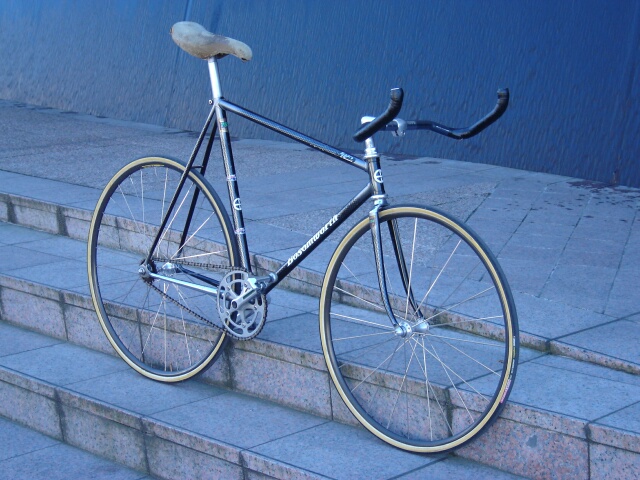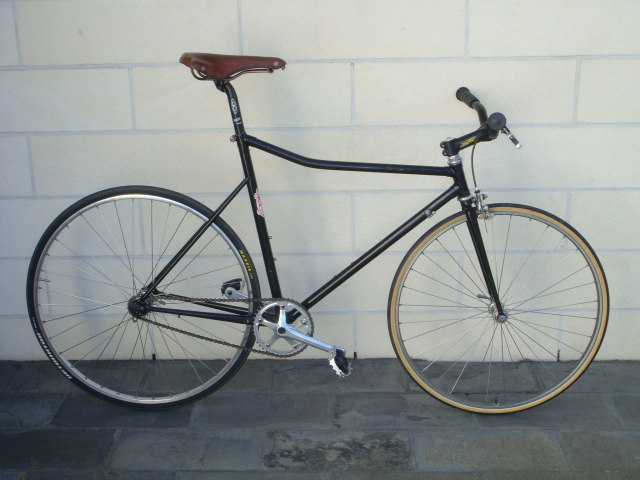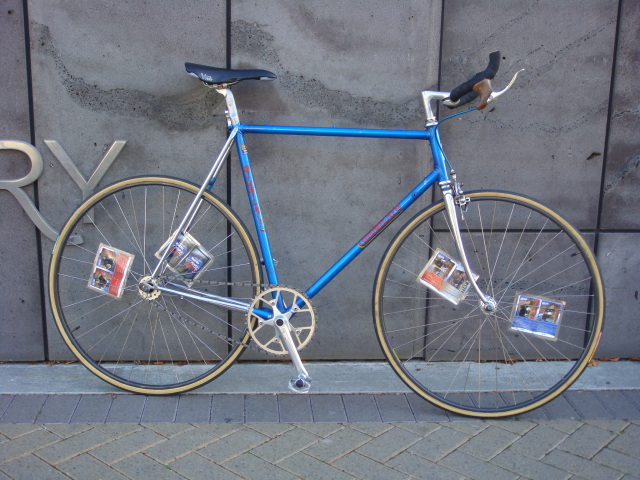An introduction to fixed gear bicycles

A couple of months ago I was asked what a fixed gear bicycle is and why they appeal to people. My response is below.
A fixed gear bike, or fixie differs from other bikes in that it lacks a free-wheeling mechanism that allows you to coast without pedalling. So on a fixie, whenever you are cycling along, the pedals are always going round and round. Bikes used for track cycling are all fixed gear and that is no doubt where the idea came from for the street fixie. They are not difficult to ride per-se, but it is necessary to be aware that the pedals will continue turning even if you momentarily forget and try to coast. Leaning the bike way over into corners is also a no-no because you will put a pedal down. Since there is no coasting ability, it is possible to brake by back-pedalling. With clip-in pedals in particular it is possible to produce enough braking effort to skid the rear wheel. Of course it's always wise to have a couple of extra brakes on the bike, particularly on the front as the front wheel produces the most braking force.
The fixie for the street has gained popularity in the last five years; take a look at the Fixed Gear Gallery which is a US-centric website going back to the start of the fixie craze.

They are appealing to different people for different reasons. They tend to be very simple bikes without any of the clutter caused by gear change mechanisms, cables and other accessories that adorn other bikes. This means that what is left contributes more strongly to the aesthetic appeal of the bike; essentially the frame, wheels, handlebars, seat and drive train (pedals, crank, even details such as the chain). Many fixed gear riders customise their bikes to their own taste, but there is always a sense of less is more. Being mechanically simpler than other bikes the fixie is more reliable; they are popular with bike messengers, who need a reliable machine. The fewer parts also make them lighter than other bikes and hence more fun to ride. Weight in a bike is all important and getting rid of all the extra clutter can make an otherwise ordinary bicycle suddenly feel very light and nimble.
There is an informal fixie club in Christchurch. They meet in Cathedral Square on Thursdays after work. They cycle somewhere different each time. I've been along on a couple of rides; a word of warning they're all very fit! At least here in Christchurch we have a lot of flat ground. I dare say that helps to make fixies popular here, as well as cycling in general.
There is little actually new in the way of fixie technology. In fact there isn't much new in cycling that hasn't been done before; aluminium rims for example, have been around for a century. What we do see are parts by small boutique manufacturers that are manufactured not just for their aesthetic appeal, but also for their quality. These days when consumer goods are pouring out of far away factories, often of lower and lower quality, with more and more increasingly nasty plastic, it's a pleasure to behold a well made part, even if it's something seemingly as mundane as a seat post. It's not necessary for the bike to be built from new parts. Indeed the bike with the most street cred may well be assembled from classic parts; an old Italian racing bike frame equipped with period Campagnolo parts for example. Of course the larger manufacturers are now getting on the band wagon and selling fixies too, so if you want to go down that path rather than the popular option of picking and choosing individual parts yourself, then that's also an option.

For me, there is something particularly pleasing about riding a fixed-gear bike. It is somehow as if you are at one with the bike. The pedals go round, you move. Likewise every movement the bike makes, you feel back through the pedals; whenever you are coasting on another type of bike you loose that feedback. Due to the lack of gear dérailleurs and free-wheeling mechanism in the hub, fixed gear bikes tend to be very quiet, almost completely silent. It's also fun to go for a customised paint job on the frame, or to put cards in the spokes; things people tend not to do on other bikes. From what I've seen all type of people ride fixies, but if there's one thing in common it would be that they tend to focus on the technical aspects of their bikes, and simply enjoy riding.
I started the www.fixedgear.nz website because I wanted to share my fixed-gear building experiences with others. The popularity has spread from the US to New Zealand, and while there are many websites devoted to the subject, there are few with a New Zealand slant. I think we often forget how isolated we are here - we cannot go on-line and choose from a vast range of gear and have it turn up the next day and pay just five bucks for the privilege. All the parts in New Zealand already have a large mark-up, and importing yourself has the overhead of ever increasing freight charges, and significant delays. I call it a living in New Zealand tax. With the website I wanted to be able to tell people, OK, here in New Zealand these are the bikes that you're most likely to use as donors, to talk about TradeMe, and local shops where you can go to have your frame painted; useful stuff for the builder. The building aspect lead me to write the First Gear software which, while not limited to just fixed gear bikes, does assist fixie riders with choosing gear ratios as well as making it possible to turn bikes not usually ideally suited for the task into fixies. The French Vitus 979 on the www.fixedgear.nz website is a case in point; the aluminium frame which is glued together is a real classic (they even won the Tour de france in the 80s), but such road frames frequently have vertical drop-outs for the rear wheel; this is not ideal for a fixie as it makes tensioning the chain problematic. The First Gear software helps you to chose the right parts so that the chain tension is perfect, first time.
-Martin van den Nieuwelaar
First Gear is copyright 2006-2008
Martin van den Nieuwelaar
Last updated 11 Jul 2017
